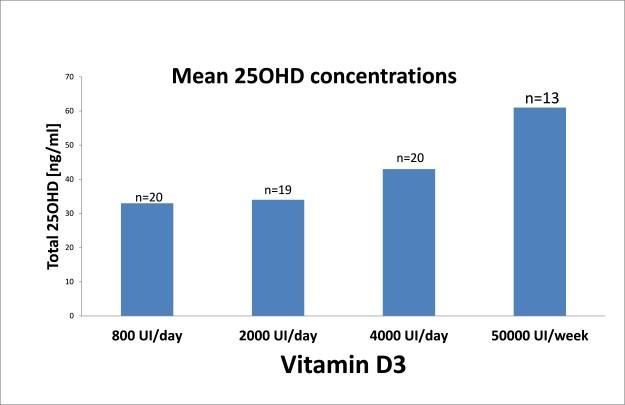In our quest for optimal health, we often turn to an array of vitamins and supplements, yet one of the most vital nutrients—Vitamin D—remains overlooked by many. Touted as the “sunshine vitamin,” Vitamin D plays a crucial role in various bodily functions, from supporting our immune system to maintaining bone health. But did you know that one of the most effective ways to obtain this essential nutrient is simply by stepping outside and soaking up some sunlight? In this article, we delve into the critical relationship between sunlight and Vitamin D, exploring how this natural source can influence our overall well-being. Whether you’re struggling with fatigue, dealing with seasonal mood fluctuations, or just seeking ways to boost your health, understanding the role of sunlight in Vitamin D synthesis may hold the key to unlocking your body’s potential. Join us as we illuminate the science behind this vital nutrient and its impact on our health.
Table of Contents
- The Science Behind Sunlight and Vitamin D Synthesis
- Identifying the Benefits of Adequate Vitamin D Levels
- Practical Tips for Safely Harnessing Sunlight
- Understanding Risk Factors for Vitamin D Deficiency
- Future Outlook
The Science Behind Sunlight and Vitamin D Synthesis

Sunlight plays a pivotal role in the synthesis of vitamin D, a nutrient that is crucial for maintaining bone health and supporting the immune system. When ultraviolet B (UVB) rays from the sun penetrate the skin, they convert 7-dehydrocholesterol—a compound found naturally in the skin—into previtamin D3. This process occurs primarily when the skin is directly exposed to sunlight. Subsequently, previtamin D3 undergoes thermal isomerization, becoming vitamin D3 (cholecalciferol), which then enters the bloodstream. While this natural synthesis is vital, various factors influence the effectiveness of vitamin D production, including:
- Geographic Location: Proximity to the equator and altitude affect UVB exposure.
- Skin Type: Melanin content determines how much UVB is absorbed, with darker skin requiring more sun exposure.
- Time of Day: UVB rays are most intense between 10 a.m. and 2 p.m., making this the ideal time for sunlight exposure.
- Season: In colder months, the angle of the sun reduces UVB rays, impacting vitamin D synthesis.
Once synthesized, vitamin D undergoes further conversion in the liver and kidneys to its active form, calcitriol. This biologically active form is responsible for enhancing calcium absorption in the gut, thereby playing a crucial role in maintaining calcium and phosphate homeostasis in the body. Interestingly, an insufficient level of sunlight exposure can lead to vitamin D deficiency, with imbalances potentially resulting in conditions such as rickets in children and osteomalacia in adults. To illustrate the importance of sunlight exposure, consider the following table that summarizes recommended daily sunlight exposure for optimal vitamin D synthesis:
| Skin Type | Recommended Sunlight Exposure (per week) |
|---|---|
| Light Skin | 2-3 times for 15-30 mins |
| Medium Skin | 2-3 times for 30-45 mins |
| Dark Skin | 2-3 times for 45-60 mins |
Identifying the Benefits of Adequate Vitamin D Levels

Maintaining adequate levels of vitamin D is essential for overall health and well-being. One of the most significant benefits of sufficient vitamin D is its role in bone health. This vital nutrient helps the body absorb calcium, which is crucial for developing and maintaining strong bones. Deficiencies can lead to serious issues such as osteoporosis in adults and rickets in children. Moreover, vitamin D is integral to muscle function, reducing the risk of falls, especially in the elderly. A well-functioning muscular system enhances mobility, ultimately contributing to a more active and independent lifestyle.
Beyond skeletal health, vitamin D plays a pivotal role in immune system function. Research has shown that adequate vitamin D levels can bolster the body’s defense against various infections, including respiratory disorders. Some studies suggest that individuals with sufficient vitamin D may experience fewer colds and flu. Additionally, emerging evidence indicates a possible link between vitamin D and mental health, with low levels being associated with increased risks of depression and mood disorders. By ensuring adequate sunlight exposure and dietary intake, individuals can harness the myriad benefits offered by this essential vitamin.
Practical Tips for Safely Harnessing Sunlight
To safely harness the abundant benefits of sunlight for vitamin D synthesis, consider these practical strategies. First, aim for exposure during safe hours (10 AM to 3 PM) while limiting direct sunlight at peak intensity. Sunscreen is fundamental; apply a broad-spectrum SPF 30 or higher at least 15 minutes before heading outdoors. Additionally, wear protective clothing, such as wide-brimmed hats and long sleeves, especially if spending extended periods outside. Incorporating short bursts of sun exposure into your routine can help you achieve adequate vitamin D levels without overexposing your skin.
Understanding your skin type is also crucial in managing sun exposure. Individuals with fair skin may require less time in the sun to produce adequate vitamin D compared to those with darker skin, who might need longer exposure. To facilitate better tracking of your sun habits, consider creating a simple chart that helps you monitor your sun exposure and vitamin D levels. Here’s a quick reference table to guide you:
| Skin Type | Optimal Daily Sun Exposure |
|---|---|
| Fair | 10-30 minutes |
| Medium | 20-40 minutes |
| Dark | 30-60 minutes |
These tailored guidelines can help you balance sun exposure for vitamin D synthesis while minimizing skin damage risks. Always listen to your body, and if you notice any signs of skin irritation or excessive burning, seek shade or use additional protective measures immediately.
Understanding Risk Factors for Vitamin D Deficiency
Vitamin D deficiency can stem from a variety of risk factors, which might be overlooked but play a significant role in maintaining optimal health. Individuals living in areas with limited sunlight exposure during certain seasons are at a greater risk. Additionally, various social and lifestyle elements contribute, such as:
- Geographic location: Living far from the equator can decrease the likelihood of sufficient UV radiation.
- Skin pigmentation: People with darker skin have more melanin, which can inhibit vitamin D synthesis.
- Age: As people age, their skin may produce less vitamin D when exposed to sunlight.
- Health conditions: Certain medical conditions like obesity or gastrointestinal disorders can affect vitamin D metabolism.
Another critical element is exposure habits. Many people spend a considerable amount of time indoors or use sunscreen excessively, both of which can impede vitamin D synthesis. Populations that are particularly vulnerable include:
| Group | Vulnerability |
|---|---|
| Older adults | Reduced skin synthesis and less outdoor activity. |
| Individuals with obesity | Vitamin D sequestered in fat tissue. |
| Pregnant women | Increased demand for vitamin D for fetal development. |
| Those with chronic illnesses | Affect absorption and metabolism of nutrients. |
Future Outlook
understanding the crucial role of sunlight in our bodies’ production of vitamin D is more than just a matter of health—it’s a vital component of our overall well-being. As we’ve explored, the benefits of adequate vitamin D levels extend beyond bone health, influencing our immune function, mood stability, and even chronic disease prevention.
As we navigate modern lifestyles that often keep us indoors, it’s essential to prioritize safe sun exposure and explore dietary sources or supplementation when necessary. Consult with healthcare professionals to tailor your needs to your lifestyle, especially in areas with limited sunshine or for individuals with specific health conditions.
Remember, while the sun is a powerful ally in our pursuit of health, balance is key. Embracing the sun’s rays means finding the right approach for your unique situation. By fostering a healthy relationship with sunlight, we can harness its benefits and empower ourselves for a healthier future. So step outside, soak up that sunlight responsibly, and let nature play its essential role in our health journey.



